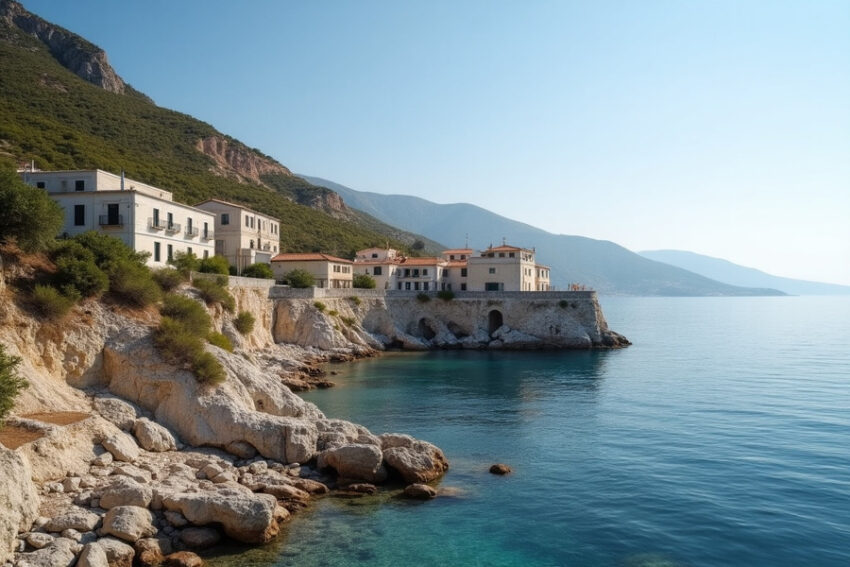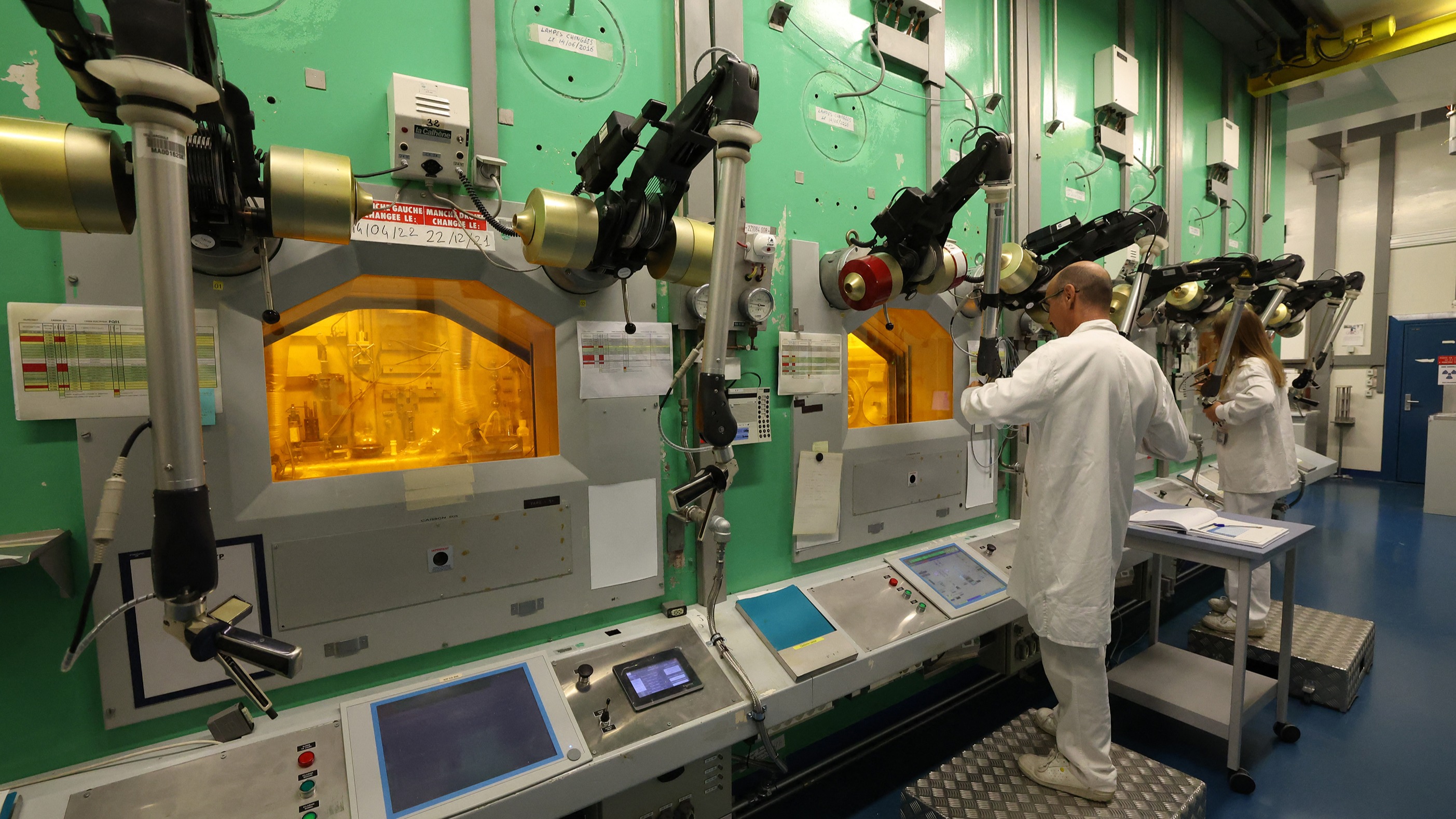Report on Greece’s Tourism Sector: Economic Performance and Sustainable Development Strategy for 2024
1.0 Economic Contribution and Performance
The tourism industry remains a primary driver of Greece’s economic success, significantly contributing to national growth and employment. This aligns with Sustainable Development Goal 8 (Decent Work and Economic Growth). In 2024, the sector’s performance was a key factor in the country’s overall economic expansion.
- GDP Growth: The Greek economy expanded by 2.1% in 2024, with the GDP reaching €200.3 billion.
- Sector Contribution: Tourism accounted for over 20% of the national GDP.
- Visitor Arrivals: The country welcomed more than 32 million visitors in 2024.
- Employment: The industry provided hundreds of thousands of jobs, reinforcing its role as a fundamental economic pillar.
2.0 Strategic Shift Towards Sustainable Tourism
Recognizing that perpetual growth in visitor volume is unsustainable, Greece is implementing a strategic pivot towards a more resilient and responsible tourism model. The national strategy for 2024 emphasizes balancing economic benefits with environmental and social stewardship, directly addressing multiple Sustainable Development Goals (SDGs). This approach aims to secure the long-term viability of the sector while preserving the nation’s natural and cultural assets.
3.0 Key Challenges to Sustainable Growth
Several pressing challenges necessitate a transition to sustainable practices. These issues threaten the long-term health of the tourism industry and impact local ecosystems and communities, highlighting the urgency for alignment with SDG 11 (Sustainable Cities and Communities) and SDG 13 (Climate Action).
- Environmental Degradation: Popular destinations are experiencing negative impacts from high tourist traffic.
- Climate Change: The effects of climate change pose a significant risk to coastal and natural attractions.
- Overcrowding and Seasonality: Intense pressure on infrastructure and resources during peak summer months creates instability.
- Resource Depletion: High consumption of energy and water in tourist-heavy regions is a major concern.
4.0 Strategic Initiatives Aligned with Sustainable Development Goals (SDGs)
To address these challenges, Greece is pursuing a multi-faceted strategy focused on sustainability, diversification, and innovation.
4.1 Infrastructure, Innovation, and Green Energy (SDG 9 & SDG 7)
Significant investment is being directed towards modernizing the foundations of the tourism sector.
- Infrastructure Upgrades: Enhancing airports, ports, and transportation links to improve connectivity and capacity.
- Green Energy Transition: Promoting energy upgrades in hotels and resorts to reduce carbon emissions, in line with SDG 7 (Affordable and Clean Energy).
- Digital Transformation: Leveraging technology to improve management, efficiency, and visitor experience.
4.2 Sustainable Communities and Regional Diversification (SDG 11)
The strategy aims to distribute the benefits of tourism more evenly and reduce pressure on saturated destinations.
- Promoting Lesser-Known Destinations: Encouraging travel to new regions to foster local economies and preserve cultural authenticity.
- Community-Driven Tourism: Collaborating with local communities to develop initiatives that protect cultural and natural resources.
- Combating Seasonality: Developing and promoting year-round travel offerings to create a more stable, balanced tourism economy.
4.3 Responsible Consumption and Environmental Protection (SDG 12, SDG 14, SDG 15)
A core component of the new strategy is the integration of environmentally responsible practices across the industry, supporting SDG 12 (Responsible Consumption and Production).
- Waste and Resource Management: Implementing measures to minimize waste and conserve water.
- Conservation Efforts: Focusing on the preservation of natural heritage, which is crucial for SDG 14 (Life Below Water) and SDG 15 (Life on Land).
- Attracting High-Value Tourism: Targeting higher-income travelers who contribute more to the local economy while often seeking sustainable and experiential travel.
5.0 Recommendations for Long-Term Resilience
To ensure the successful implementation of this sustainable vision, further actions are required.
- Workforce Development: Invest in education and training for the tourism workforce, focusing on sustainable hospitality practices, hotel management, and cultural preservation. This supports SDG 4 (Quality Education) and SDG 8.
- Regulatory Framework: Establish a clear, consistent, and transparent regulatory framework to guide the industry towards sustainability.
- Public-Private Partnerships (SDG 17): Foster collaboration between government bodies, private businesses, and local communities to ensure a unified approach to achieving sustainability goals, reflecting the principles of SDG 17 (Partnerships for the Goals).
6.0 Conclusion
Greece’s tourism industry is at a critical juncture. While its economic contribution is undeniable, its future success is contingent upon a decisive and comprehensive shift towards sustainability. By aligning its growth strategy with the Sustainable Development Goals—focusing on environmental conservation, community well-being, regional diversification, and infrastructure innovation—Greece can solidify its position as a global leader in responsible tourism, ensuring long-term prosperity for its economy, its people, and its environment.
Analysis of Sustainable Development Goals in Greece’s Tourism Industry
1. Which SDGs are addressed or connected to the issues highlighted in the article?
-
SDG 8: Decent Work and Economic Growth
The article heavily emphasizes the tourism industry’s role as a “major driver of its economic success,” contributing “over 20 percent of Greece’s GDP” and providing “hundreds of thousands of jobs.” This directly aligns with SDG 8’s focus on promoting sustained, inclusive, and sustainable economic growth, full and productive employment, and decent work for all.
-
SDG 9: Industry, Innovation and Infrastructure
The need to “invest significantly in key areas such as infrastructure, green energy, and digital transformation” is a central theme. The article calls for “upgraded infrastructure, particularly airports and ports,” and “energy upgrades in hotels,” which connects to SDG 9’s goal of building resilient infrastructure, promoting inclusive and sustainable industrialization, and fostering innovation.
-
SDG 11: Sustainable Cities and Communities
The article addresses the negative impacts of tourism on destinations, such as “overcrowding, high energy consumption, and resource depletion.” It also highlights the importance of “preserving its cultural and natural heritage.” These points are directly related to SDG 11, which aims to make cities and human settlements inclusive, safe, resilient, and sustainable, including efforts to protect cultural and natural heritage.
-
SDG 12: Responsible Consumption and Production
The core message of the article is the shift towards “sustainable tourism practices.” It calls for tourism businesses to integrate “environmentally responsible practices into their operations,” including “reducing carbon emissions, conserving water, and minimizing waste.” This aligns with SDG 12’s goal of ensuring sustainable consumption and production patterns.
-
SDG 4: Quality Education
The article points out that a sustainable tourism future “requires significant investment in workforce development.” It states that it is “crucial to invest in education and training for the hospitality industry” to equip workers with the necessary skills. This connects to SDG 4, which aims to ensure inclusive and equitable quality education and promote lifelong learning opportunities for all.
-
SDG 17: Partnerships for the Goals
The article concludes by stating that Greece’s path to sustainable tourism “will rely on a collective effort across government, businesses, and local communities.” The need for “Public and private sector collaboration” is identified as “vital,” which reflects the core principle of SDG 17 to strengthen the means of implementation and revitalize the global partnership for sustainable development.
2. What specific targets under those SDGs can be identified based on the article’s content?
-
SDG 8: Decent Work and Economic Growth
- Target 8.2: Achieve higher levels of economic productivity through diversification, technological upgrading and innovation. The article supports this by advocating for diversifying “the tourism offerings across different regions” and investing in “digital transformation.”
- Target 8.9: By 2030, devise and implement policies to promote sustainable tourism that creates jobs and promotes local culture and products. The entire article is a discussion of this target, focusing on creating “strategies for long-term growth and sustainability” that preserve “cultural and natural heritage.”
-
SDG 9: Industry, Innovation and Infrastructure
- Target 9.1: Develop quality, reliable, sustainable and resilient infrastructure… to support economic development and human well-being. The article explicitly calls for investment in “modern infrastructure” and “upgraded infrastructure, particularly airports and ports.”
- Target 9.4: By 2030, upgrade infrastructure and retrofit industries to make them sustainable… and greater adoption of clean and environmentally sound technologies and industrial processes. This is reflected in the call for “eco-friendly initiatives,” “green energy,” and “energy upgrades in hotels, resorts, and other tourist-related establishments.”
-
SDG 11: Sustainable Cities and Communities
- Target 11.4: Strengthen efforts to protect and safeguard the world’s cultural and natural heritage. The article repeatedly emphasizes the need for “preserving its cultural and natural heritage” and “cultural preservation.”
- Target 11.b: By 2020, substantially increase the number of cities and human settlements adopting and implementing integrated policies and plans towards… climate change adaptation, resilience to disasters… The article discusses countering the effects of “environmental degradation, climate change” and building a “resilient” tourism sector.
-
SDG 12: Responsible Consumption and Production
- Target 12.b: Develop and implement tools to monitor sustainable development impacts for sustainable tourism that creates jobs and promotes local culture and products. The article’s focus on implementing “sustainable tourism practices” and creating a “well-established and consistent regulatory framework” to guide the industry directly relates to this target.
-
SDG 4: Quality Education
- Target 4.4: By 2030, substantially increase the number of youth and adults who have relevant skills, including technical and vocational skills, for employment, decent jobs and entrepreneurship. This is directly addressed by the statement that “Tourism workers must be equipped with the skills and knowledge to support sustainable practices” through “investment in education and training for the hospitality industry.”
3. Are there any indicators mentioned or implied in the article that can be used to measure progress towards the identified targets?
-
For SDG 8 (Decent Work and Economic Growth)
- Indicator 8.1.1 (Annual growth rate of real GDP): The article explicitly states, “Greece’s economy grew by 2.1 percent in 2024, with its GDP reaching 200.3 billion euros.”
- Indicator 8.9.1 (Tourism direct GDP as a proportion of total GDP): The article provides this data: “Tourism accounted for over 20 percent of Greece’s GDP.”
- Number of jobs created in the tourism sector: The article mentions that the sector “provided hundreds of thousands of jobs.”
- Number of international tourist arrivals: The article quantifies this with “more than 32 million visitors flocking to the country in 2024.”
-
For SDG 9 (Industry, Innovation and Infrastructure)
- Investment in sustainable infrastructure: While no specific numbers are given, the call to “invest significantly in key areas such as infrastructure, green energy” implies that tracking investment levels in these areas would be a key indicator.
- Adoption of clean technologies: Progress could be measured by the number of hotels and resorts completing “energy upgrades” and implementing “eco-friendly initiatives,” as mentioned in the text.
-
For SDG 11 (Sustainable Cities and Communities)
- Policies for heritage protection: The development of a “well-established and consistent regulatory framework” to preserve “cultural and natural resources” is an implied indicator of progress.
- Reduction of tourism seasonality: Success in mitigating overcrowding can be measured by an increase in “off-peak travel” and the promotion of “year-round travel,” as suggested in the article.
-
For SDG 12 (Responsible Consumption and Production)
- Implementation of sustainable practices by businesses: An indicator would be the number of tourism businesses that have integrated practices like “reducing carbon emissions, conserving water, and minimizing waste.”
4. Table of SDGs, Targets, and Indicators
| SDGs | Targets | Indicators (Mentioned or Implied in the Article) |
|---|---|---|
| SDG 8: Decent Work and Economic Growth | 8.9: Devise and implement policies to promote sustainable tourism that creates jobs and promotes local culture and products. |
|
| SDG 9: Industry, Innovation and Infrastructure | 9.4: Upgrade infrastructure and retrofit industries to make them sustainable… with greater adoption of clean and environmentally sound technologies. |
|
| SDG 11: Sustainable Cities and Communities | 11.4: Strengthen efforts to protect and safeguard the world’s cultural and natural heritage. |
|
| SDG 12: Responsible Consumption and Production | 12.b: Develop and implement tools to monitor sustainable development impacts for sustainable tourism. |
|
| SDG 4: Quality Education | 4.4: Substantially increase the number of youth and adults who have relevant skills… for employment, decent jobs and entrepreneurship. |
|
| SDG 17: Partnerships for the Goals | Strengthen the means of implementation and revitalize the Global Partnership for Sustainable Development. |
|
Source: travelandtourworld.com







